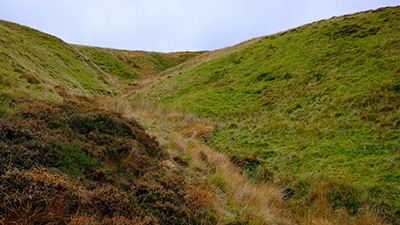UK ERW GGR Demonstrator
Our Farming Advisor, Karen, has been involved in this collaborative research project looking at enhanced rock weathering and the potential for it to speed up the sequestration of carbon in the soil, as well as producing possible co-benefits such as releasing crop nutrient, liming effects and yield increases.
What is enhanced rock weathering (ERW)?
Enhanced weathering is a process that aims to accelerate the natural weathering by spreading finely ground silicate rock, such as basalt, onto soils to speed up chemical reactions between rocks, water, and air. It also removes carbon dioxide (CO2) from the atmosphere, by converting it into soluble bicarbonate that is ultimately transferred to the oceans via surface runoff to store it permanently in the ocean.
Rate of CO2 removal by enhanced rock weathering depends on the availability of water, the material being weathered and the acid doing the weathering. The permanence of the removal depends on the soil exchange capacity of the soil, the potential for secondary mineralization and any CO2 being rereleased downstream in waterways.
Field trials investigate the potential of ERW as a method of removing greenhouse gases
Modelling has been used to estimate the potential carbon dioxide removal range by spreading this ground silicate rock for the 6Mha of UK agricultural land. This work suggests ERW has CDR potential in the range of 6-30Mt CO2yr.
The field trial results after one year and scaled up over 6 Mha suggest a possible of 14-38 Mt CO2yr so far.
The government’s UK Greenhouse Gas Removal technologies requirements by 2050 are 58Mt CO2 yr-1, meaning enhanced rock weathering could potentially deliver 20 percent of this target with co-benefits.
Trial sites
Field trials are happening at three sites in the UK, including on arable in Hertfordshire, lowland grassland in Devon and upland grassland in Wales.
 Hertfordshire arable site
Hertfordshire arable site
40t/ha of basalt rock has been, and will continue to, be applied annually and ploughed in.
One benefit seen was a liming effect in the topsoil. There were also significant increases in the availability of the micronutrient molybdenum, a small uplift in the bean but not barley yield, and worm abundance on the sites where the basalt was applied.
 Devon grassland
Devon grassland
40t/ha of crushed basalt has been applied and is going to be applied annually for 2 to 4 years. In the first two years of the trial a significant increase at depth in the soil was observed for calcium and magnesium which are important for capturing CO2, and phosphorus.
In the 2023 silage harvest nutrients important for animal health, including magnesium, manganese, sodium, nickel, phosphate, zinc and carbon were higher.
There was no effect on yield. Soil analyses indicate a CO2 removal potential of 4-6 t CO2 per hectare, and this needs reconciling with CO2 removed in soil drainage waters..
 Wales upland grassland
Wales upland grassland
On the upland acidic grassland Welsh site, 20t/ha of basalt rock has been applied, using quadbikes.
There was a liming effect seen in the subsoil and an increase has been seen in carbon sequestration. Ongoing measurements are required to quantify how much. There has been no increase in yield to date. The freshwater ecology is currently being monitored and no changes have been seen to date.
Summary
Soil biodiversity has also been monitored across the sites. The initial results show that changes in bacterial component are more pronounced than those in animals, fungi, and protists. However, enhanced weathering with basalt does not negatively affect keystone groups in the microbial community.
That were some negative impacts on arachnids (spider family) seen, but these need continued monitoring.
Overall, the basalt successfully weathered on all three field sites and liming effects were seen, however these varied depending on the site.
There was also significant difference in carbon dioxide removal rates. The values of these still need accurately assessing to understand annual carbon dioxide removal rates, and how to account for different fluxes between catchments, as these rates are strongly dependent on water fluctuations.
These are ongoing field trials. You can find out more at Sheffield Universities Enhanced Rock Weathering project website.


